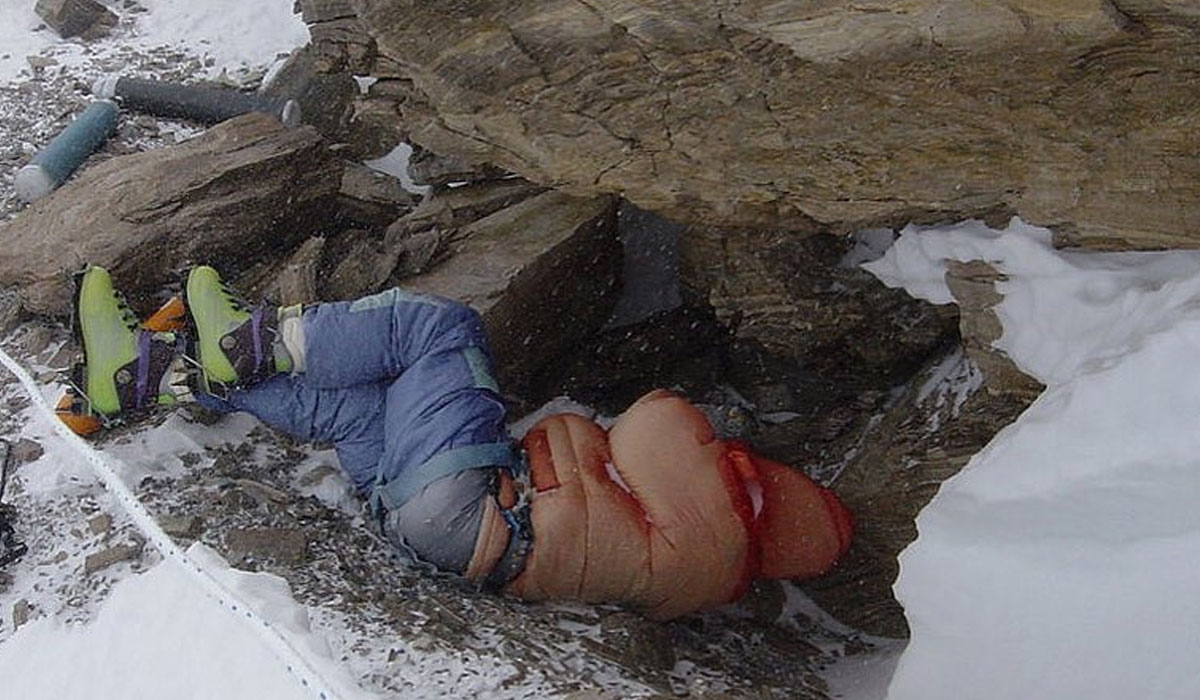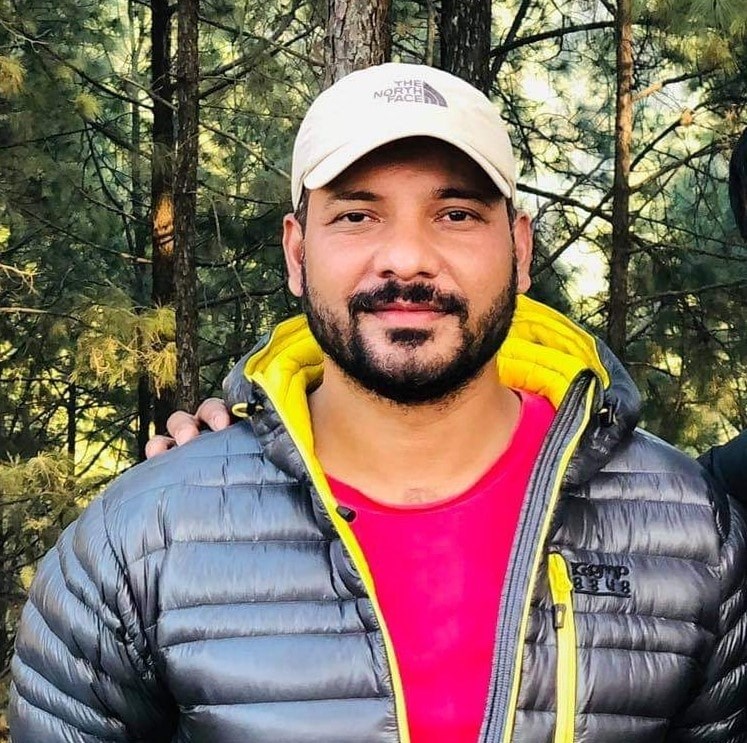The Mt. Everest expedition, scaling the highest snowy peak in the world is the lifelong dream of many mountaineers. Mountaineering enthusiasts want to stand on the top of Mt. Everest at least once in a lifetime as it is the pinnacle of this beautiful sport of scaling the snowy domes.
However, it’s not that the climbers who want to taste victory on the tallest mountain in the world always are successful in their attempts. Many of these mountaineers with undying love for this glorious peak have also taken the last breath on its slope, such is the story of the Everest green boots.
Tsewang Paljor a.k.a Everest green boots is one of the most popular dead bodies on Everest lying on the main climbing route of the mountain. His lying corpse on the slope of the mountain raises questions about the ethics and controversial morals of the mountaineering practice.
Everest Green boots which was a landmark on the slopes of Everest has a tragic backstory, passionate heart, love for the heights, aspirations to take care of family, and patriotic reasons, it’s cumulation of a great story that doesn’t have a happy ending.
Table of Contents
Who is Everest Green Boots- Tsewang Paljor?
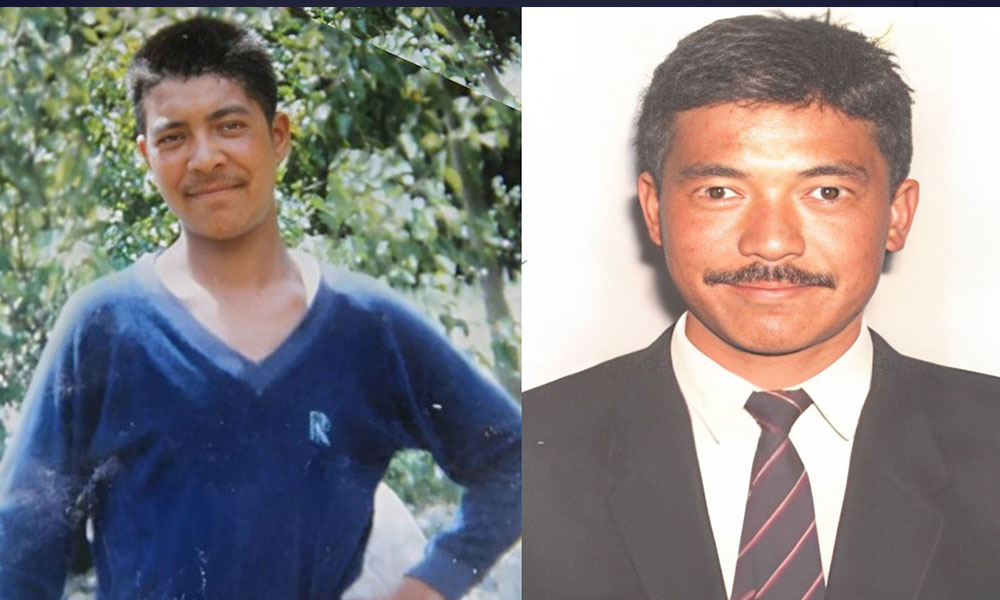
Everest Green Boots a.k.a Tsewang Paljor was born on 10th April 1968 in a small village in India called Sakti, raised close to the mountains and hills, he was always fond of heights and thrills. After growing up, he joined the Indo-Tibetan Border Police, but he never stopped yearning for the snowy peaks.
That’s when he got the opportunity to take in India’s 1996 Everest Expedition, as he had already climbed several mountain peaks and was an avid rock climber, Everest green boots a.k.a Paljor was handpicked for this historic expedition.
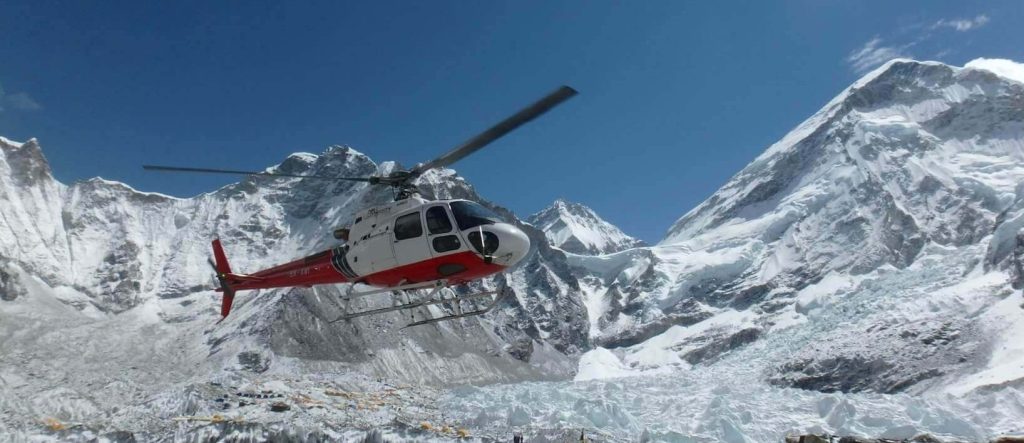
Everest Base Camp Helicopter Tour
Do you dream of seeing Everest but do not quite fancy spending a few weeks hiking there? Well, don’t worry – we have the solution for you. We can take you to Everest in just one day – all in the comfort and thrill of a Helicopter!
Enquire Now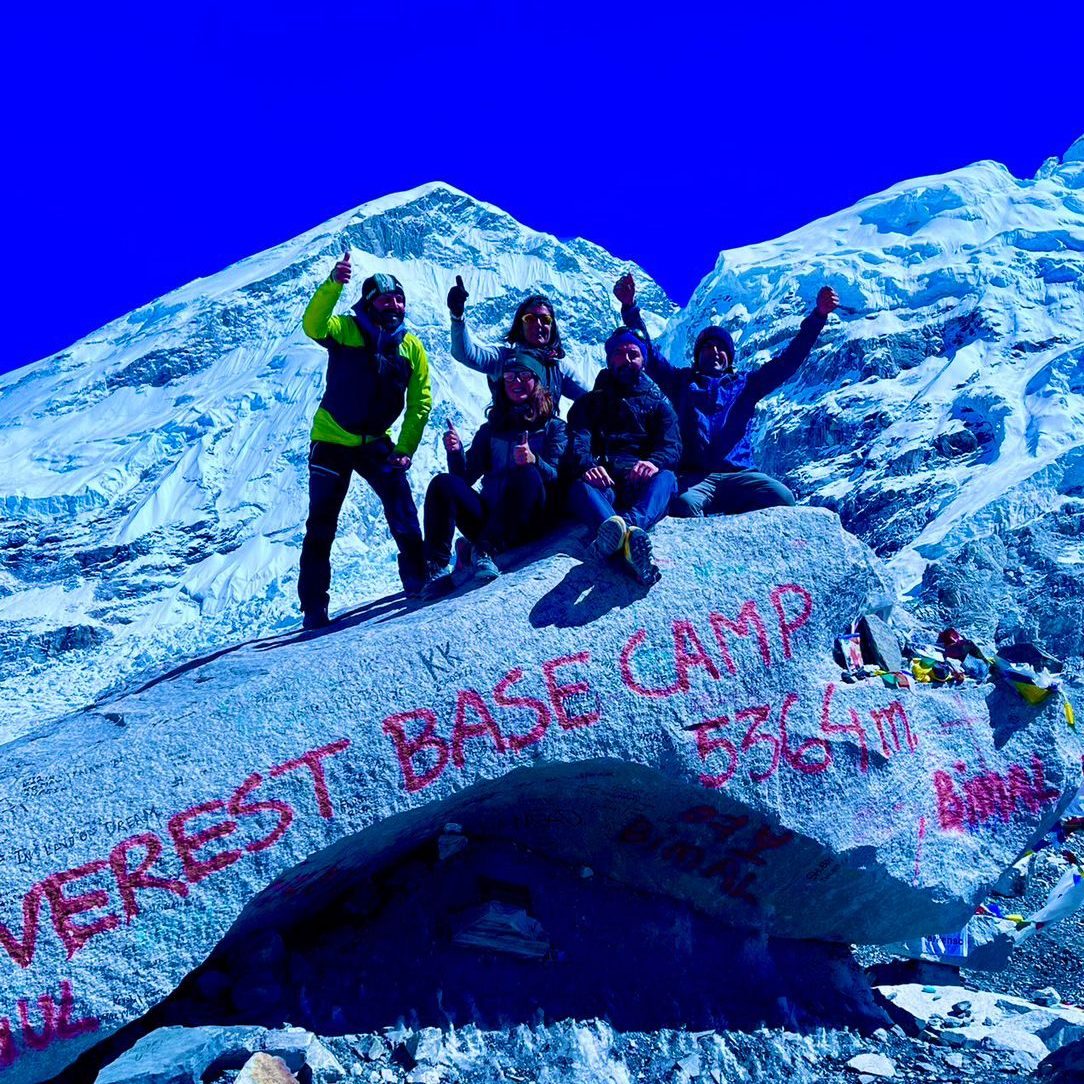
12 Days Everest Base Camp Trek Itinerary and Cost For 2024
Everest Base Camp Trek: Adventure and trekking to Everest Base Camp (5364 m) in Nepal. Cost-effective trek to EBC, 12 Days Base Camp Trek. Book now.
Enquire Now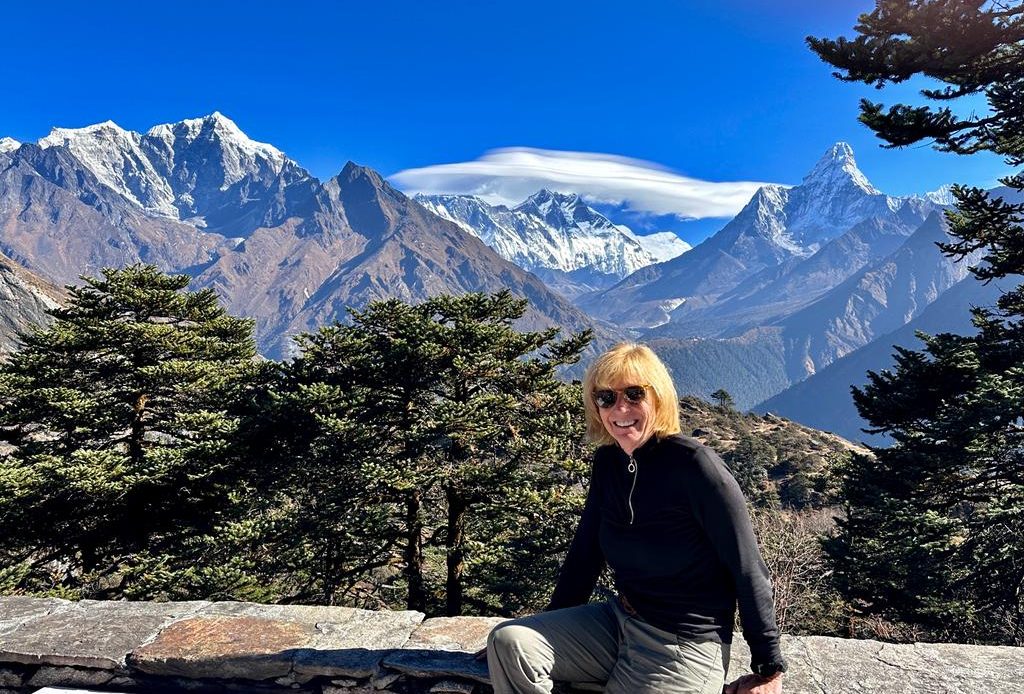
Luxury Everest Base Camp Trek
Luxury Everest Base Camp Trek presents adventure and comfort in the Himalayas. It’s a dream adventure for many outdoor enthusiasts, offering a unique opportunity to…
Enquire NowHis Mother Didn’t Want Him to Go on the 1996 Everest Expedition
The Everest Expedition 1996 was a matter of honor and pride for the Indo-Tibetan Border Police force and they only picked the best candidates for the expedition. Everest green boots a.k.a Tsewang Paljor was a young Ladakh native full of enthusiasm and was known for his strength and valor.
In fact, the expedition leader Mahendra Singh had handpicked Paljor for the expedition for those reasons. But, his mother didn’t want him to do this expedition. Initially, the Indian mountaineer had hidden the details of his expedition from the family as he wanted to share the news only after the successful attempt.
However, the news of the 1996 Everest Expedition eventually reached the ears of his mother, Tashi Angmo and she begged him not to on this mountain scaling. But, Paljor who was expecting to bring benefits to his family after this historic achievement didn’t waver from his decision.
Paljor response to his mother, who was begging him not to go on such a dangerous expedition was
“I have to”
Everest green boots a.k.a Tsewang Paljor was positive that the success of this expedition would mean there would be benefits for the family and he could support them even more. But, little did he know, his heart filled with ambitions and dreams to provide his family comfort would perish along with him on the treacherous slopes of the mountain.
The last person to see Paljor’s face was his brother-in-law, Namgyal who came to see him off at the Delhi before the 1996 Everest Expedition.
How Did Everest Green Boots Die?
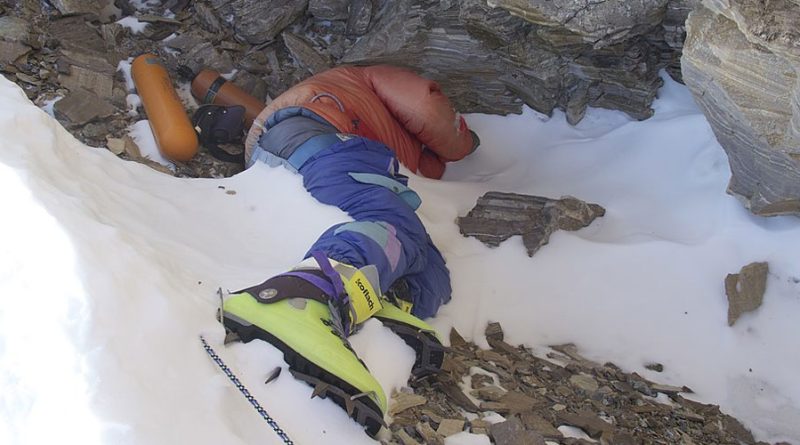
The 1996 Everest Expedition Indo-Tibetan Border Police included members, Head Constable Teswang Paljor, Deputy Leader Harbhajan Signh, Subedar Tsewang Samanla, Lansnayek Dorje Morap, and Commandant Mahendra Singh.
It was on a fateful day, 10th May 1996, the Indian expedition team pushed for the summit, at around 5:45 p.m. Subedar Tsewang Samanla radioed to the expedition leader that the expedition team comprised of him, Head Constable Tesang Paljor a.k.a Everest green boots and Lasnayek Dorj Morap had successfully summitted the mountain.
The first successful scaling of the tallest mountain in the world by an Indian expedition team from the northern side was celebrated along the camps on the mountain as well as in the capital, Delhi.
However, as the Indo-Tibetan Border Police expedition team was moving with their descending route to Camp IV, a deadly blizzard hit the multiple climbing teams on the mountain. 10th May 1996 turned out to be one of the darkest days in mountaineering history as the deadly blizzard hit multiple segments of the mountain killing 8 mountaineers and injuring many.
Including the Indo-Tibetan Border Police expedition team, Adventure Consultant’s expedition team led by Rob Hall, Mountain Madness’s team led by Scott Fischer, and the Waianese expedition team fell victim to the disastrous blizzard on this day.
This deadly blizzard scattered the climbers all over the slope and even trapped many inside the ‘death zone on Everest’ where they took their last breath, Everest Green Boots a.k.a Head Constable Teswang Paljor was one of the victims of that destructive blizzard.
Disregarding the 2 O’clock Rule on Everest
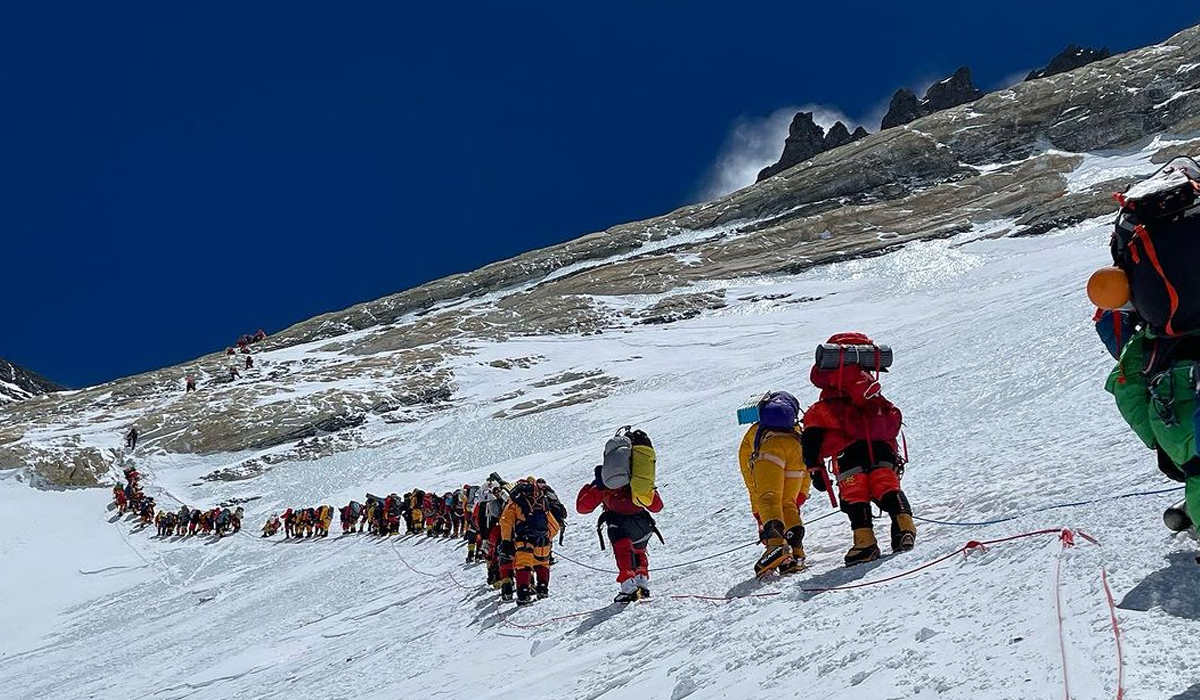
If you have any kind of familiarity with the Mt. Everest expedition, then you might have at least heard about the 2 o’clock rule on Everest at least once. It’s an absolute rule while scaling the tallest mountain in the world that every mountaineer should honor.
But, what exactly is this 2 o’clock rule on Everest, well while pushing for the summit of the highest snowy peak in the world at 8,849 meters from Camp IV at 7,950 meters, the mountaineers should do it before 2 p.m.
In case, if they fail to push for the summit by 2 p.m., then as per the rule they should return back to safety and try summitting all the way to the top next time. There are generally two reasons why this rule should be followed by every climber on an Everest expedition.
First, the death zone on Everest is a very risky segment and one of the hardest obstacles to overcome in this expedition, so the climbers are not advised to be inside the death zone for more than 16- 18 hours. Your body literally starts to break down inside the death zone on Everest, slowly dying minute by minute and cell by cell.
As for the second reason, it takes approximately 7- 9 hours to push all the way to the top and the climbers are scaling with the limited supplies. So, as the hours and supplies are properly accounted for considering the scaling time, pushing for the summit after 2 p.m. means gambling inside the death zone with a limited supply.
It is especially dangerous if the climbers run out of oxygen supplies; failing to make it all the way back to the camp in the dark with already tired-weary body and low supply especially inside the death zone means that death is inevitable.
On this fateful day, the Everest green boots a.k.a Paljor came across a similar situation. The Indo-Tibetan Border Police expedition team had a late start from their camp on the northern side, while most of the climbers leave the camp before 2 a.m., the Everest green boots’ expedition started their scaling at around 3: 30 a.m.
Despite being well informed about the two o’clock rule on Everest, the Everest green boots’ team kept pushing for the summit, the climbing team which had a late start knew that they wouldn’t make it all the way to the top during the recommended safe hours, but they still kept pushing for the summit.
Request to Push for the Summit With the Expedition Team Leader Despite Late Hours
The Tibetan Border Police’s expedition from the north, Tibetan side which is less snowy than the southern route from Nepal’s side but is considered to be significantly harder than the alternative route.
Although the Everest green boots expedition team had a late start during the summit day, they had surprisingly covered a lot of distance to make up for the late start. The expedition leader of the Indo-Tibetan Border Police’s scaling Mahendra Singh had strictly instructed the climber to honor the 2 o’clock rule on Everest and not continue scaling if they fell behind 2:30 – 3 p.m.
Everyone initially agreed with the instructions, but considering the late start and distance covered on the slopes of the mountain, the expedition leader at the advance camp knew that his climbing team wouldn’t make it upto the summit within the safe hours.
So, he decided to pull back his expedition team halting the scaling on that and trying some other day. Deputy leader, Harbhajan Singh who was scaling with the three Ladakhi climbers Teswang Paljor, Dorje Morap, and Tsewang Samanla, was far behind from the climbers.
As the three Ladakhi climbers including Everest green boots were trying to make up for the late start, they had almost left the deputy leader in the snowy dust. Considering the instructions, Harbhajan Singh tried signaling the climbers to pull back as it wasn’t deemed safe.
The deputy leader tried signaling the Ladakhi climbers to fall back, but it’s not clear whether they didn’t see the signal or ignored pushing for the summit as they were getting close to the top of the world. On the other hand, Harbhajan Singh who had suffered from frostbite during the scaling climbed down to the camp as it was evident that the team wouldn’t make it to the summit before 3 p.m.
While the Ladakhi climbers were on their ascending route, at 3 p.m., Subedar Tsewang Samanla contacted the expedition leader Mahendra Singh at the advance camp requesting the permit to keep pushing for the summit. However, the expedition leader considering the risk factors declined the request and ordered the climbing team to climb down to the safe camp.
The weather conditions had slowly started to deteriorate, but the three Ladakhi climbers insisted on the permission to push for the summit as it was at now hand’s reach. Still, the expedition leader requested the climbers not be overconfident and return back to the camp before sunset.
But at that moment, Subedar Tsewang Samanla handed the radio to Everest green boots a.k.a Teswang Paljor who again requested the expedition leader to give them permission to let them summit the mountain. And the connection suddenly got cut off.
Was It a Summit Fever?
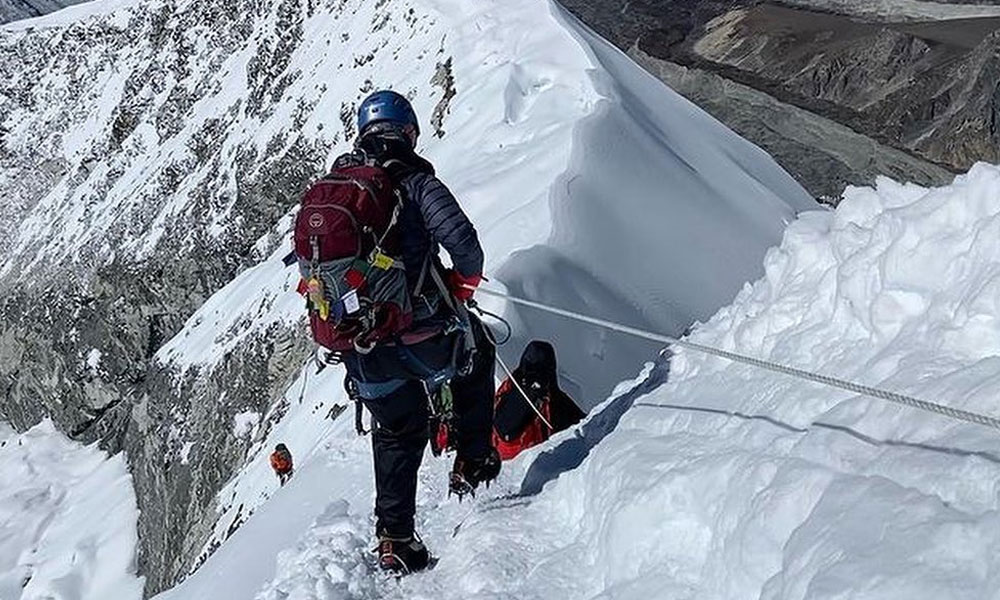
Euphoric a.k.a also known as the ‘summit fever’ is one of the most dangerous conditions where the climbers are taken over by strong emotion to keep their pursuit as they get closer to the summit.
It is especially dangerous on the highest peaks in the world with large ‘death zone’ segments. When taken over by the strong emotion to keep pushing for the top, the mountaineers are usually known to neglect the safety concerns and even overlook the environmental factors as the summit seems like it’s at hand’s reach.
There are been several such incidents where the climbers are overwhelmed by emotions at such a level that they even overlook major safety concerns, running out of supplies, falling down from the route, not being able to move due to fatigue, etc. are some of the concerning aftermath of climbing high, summit fever.
Despite the order of the expedition leader Mahendra Singh, his clear instruction not to keep pushing for the summit after 2:30 – 3 p.m., and clearly deteriorating weather conditions, the three Ladakhi climbers kept pushing for the summit of the mountain as they felt it was at hand’s reach.
The Indo-Tibetan Border Police expedition members also were able to successfully reach all the way to the summit, engraving their name in the mountaineering history as the members of the first Indian expedition team that successfully scaled Mt. Everest from the Tibetan side.
Subedar Tsewang Samanla contacted the expedition leader Mahendra Singh at the advance camp at 5:45 p.m. sharing the news of the successful summit by the three Ladakhi climbers. The expedition leader shared the happy news with Delhi and the celebration shorty began at the camps on the slopes of the mountain as well as in army quarters all over India.
But, suddenly the cheers and celebratory cries were overshadowed by the distress and worries as the expedition team learned that a disastrous blizzard had hit several sections of the mountain. And Indo-Tibetan Border Police expedition team lost contact with the three Ladakhi climbers who had just successfully submitted the tallest peak in the world from the Tibetan side.
Requesting for Help With the Japanese Expedition Team
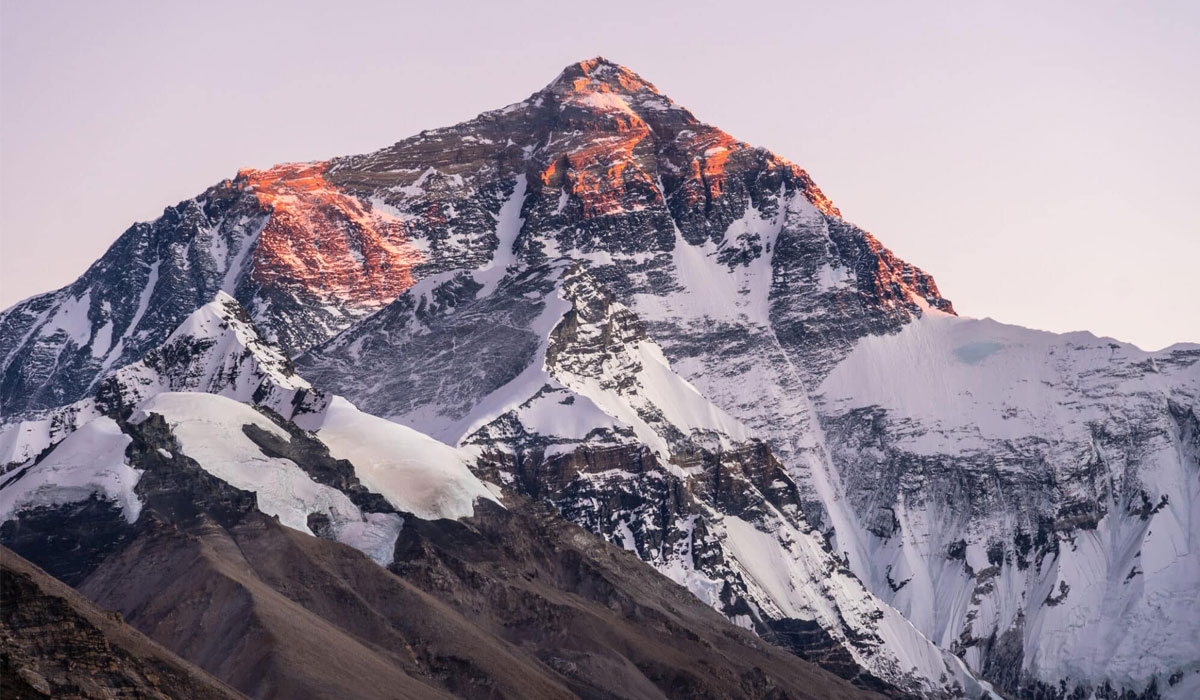
After the Indio-Tibetan Border Police expedition team lost contact with their advancing climbers including Everest green boots a.k.a Tsewang Paljor, the team was hopeful their climbers would return safely. The Ladakhi climbers had also previously overcome life-threatening circumstances while serving in the force.
Still, to strengthen their chances of survival, the expedition leader Mahendra Singh decided to ask for aid from the Japanese expedition that was from Furukawa. The Japanese expedition team leader, Koji Yada upon the request of Singh contacted his advancing team at Camp IV and briefed them about the ongoing situation.
The Japanese expedition team leader also assured Singh that their advancing climbers would assist in locating and rescuing the Ladakhi climbers hit by the blizzard. The Japanese advancing climbers left Camp IV at around 9 a.m. after the blizzard stopped on the 11th May 1996.
However, it was later reported that the Japanese team did spot the fallen Ladakhi climbers lying on the slope severely frostbitten, but they didn’t provide any kind of help to the climbers. This incident later became an international issue where the morals and humanity of the climbers were questioned.
Every Man for Himself
You might not be familiar with this situation but in mountaineering ‘every man for himself’ proverb is quite applicable, especially on high altitude and dangerous slopes. Mountaineering is a dangerous sport, every climber who is scaling the mountain understands that it doesn’t take much time for the situation to go worse from bad.
Climbers also understand that in case of any danger or if they fall behind, they are on their own. Even the fellow climbers have good intentions to help the fallen comrade, due to risk factors if they start tending to and rescuing the fallen climber without enough support, it means they are putting their lives at risk as well.
So, every climber is fully aware of the unspoken rule during the mountain expedition. However, as the two Japanese advancing climbers and their three Sherpa climbing guides passed the Ladakhi climbers dispersed on the freezing slopes after the blizzard hit, it became sensational news.
Advancing climbers Itsuki Shigekawa and Hiroshi Hanada including Dorje Sherpa and two other Sherpa climbers from the Japanese team spotted the advancing climbers from the Indo-Tibetan Border Police expedition team, but instead of tending to them, they kept pushing for the summit.
Later, the Japanese expedition team held a press conference in Fukuoka where they told the press that the accusations were baseless. The Japanese expedition team stated that they offered as much help as they could to assist the Ladakhi climbers hit by the blizzard.
They did admit that they spotted several climbers near the summit, however, according to the advancing team, they were not able to tell if they were in trouble or not. The Japanese expedition also pointed out that the advancing climbers from the Indo-Tibetan Border Police expedition died due to the team’s negligence.
According to the Japanese expedition team, the Indian team didn’t make any attempts to rescue their advancing climbers who were hit by the deadly blizzard the night before. According to the advisor from the Indo-Tibetan Border Police, two of the advancing climbers from their expedition team could have been saved if the Japanese advancing climbers had helped them.
Everest green boots a.k.a Tsewang Paljor wasn’t among the two climbers scattered on the slopes near the summit on 11th May after the deadly blizzard struck the mountain.
Everest Green Boots’ Body Was Lost for Three Years
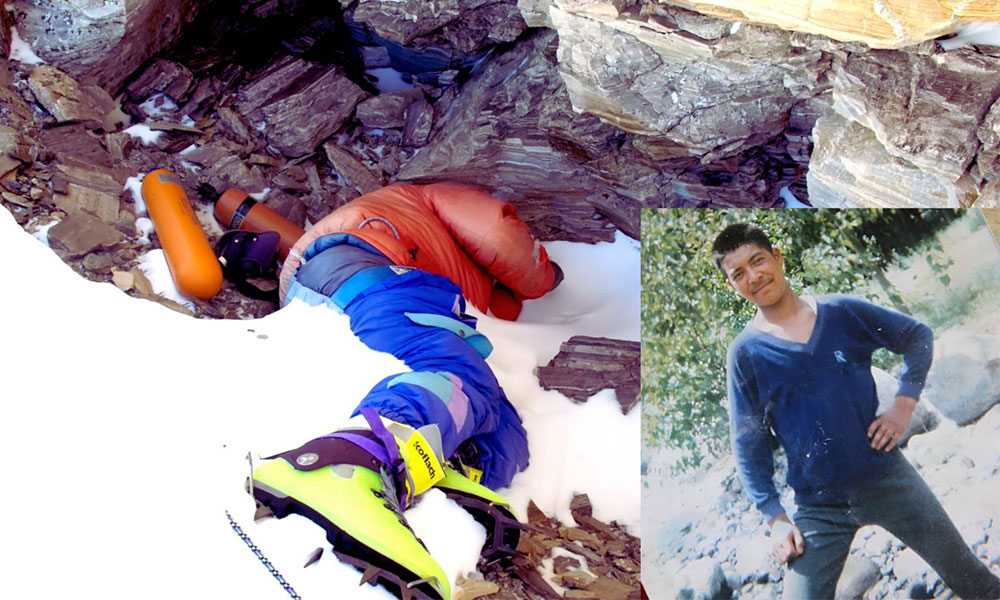
After the disastrous blizzard hit multiple sections on the slope of Everest on 10th May, two of the Ladakhi climbers were spotted by the Japanese advancing climbers on 11th May 1996. But, the body of Everest green boots a.k.a Tsewang Paljor was nowhere to be found.
Apparently Paljor after getting separated from the team after the blizzard hit had taken shelter in a small cave inside the death zone at an altitude of 8,500 meters. The Everest green boots took his last breath inside the small cave and Green highlighted mountaineering boot was sticking outside clearly visible to the climbers ascending to the summit of the mountain.
Hence earning him the name, ‘Everest Green Boots’.
Climbers who were pushing for the summit had to pass through this section of the mountain and often used this famous dead body on Everest as a landmark to determine the summit distance from that point. As well as the reminder of how dangerous and merciless the slopes of the mountain can be.
But suddenly in 2014, the body of the Everest green boots disappeared from the small cave inside the death zone in the mountain. As almost every climber was familiar with this popular dead body inside the death zone, they were concerned about what happened to Everest Green boots’ body.
But it turned out that the Everest Green boots’ family had requested mountaineers to bury the body on the slopes of the mountain. As retrieving bodies from the death zone in Everest can be really expensive, rescue operations start at US$ 70,000, like many other climbers’ families, Everest green boots’ family also requested snow burial for him.
However, his body was discovered three years later in 2017 by the climbers pushing for the summit near the small cave where he had taken his last breath. Previously mountaineers had given Everest green boots a snow burial near the cave and mountaineers who discovered his body in 2017 also covered his body with snow as a sign of respect and to let him rest on the snow-clad slopes.
See also:



